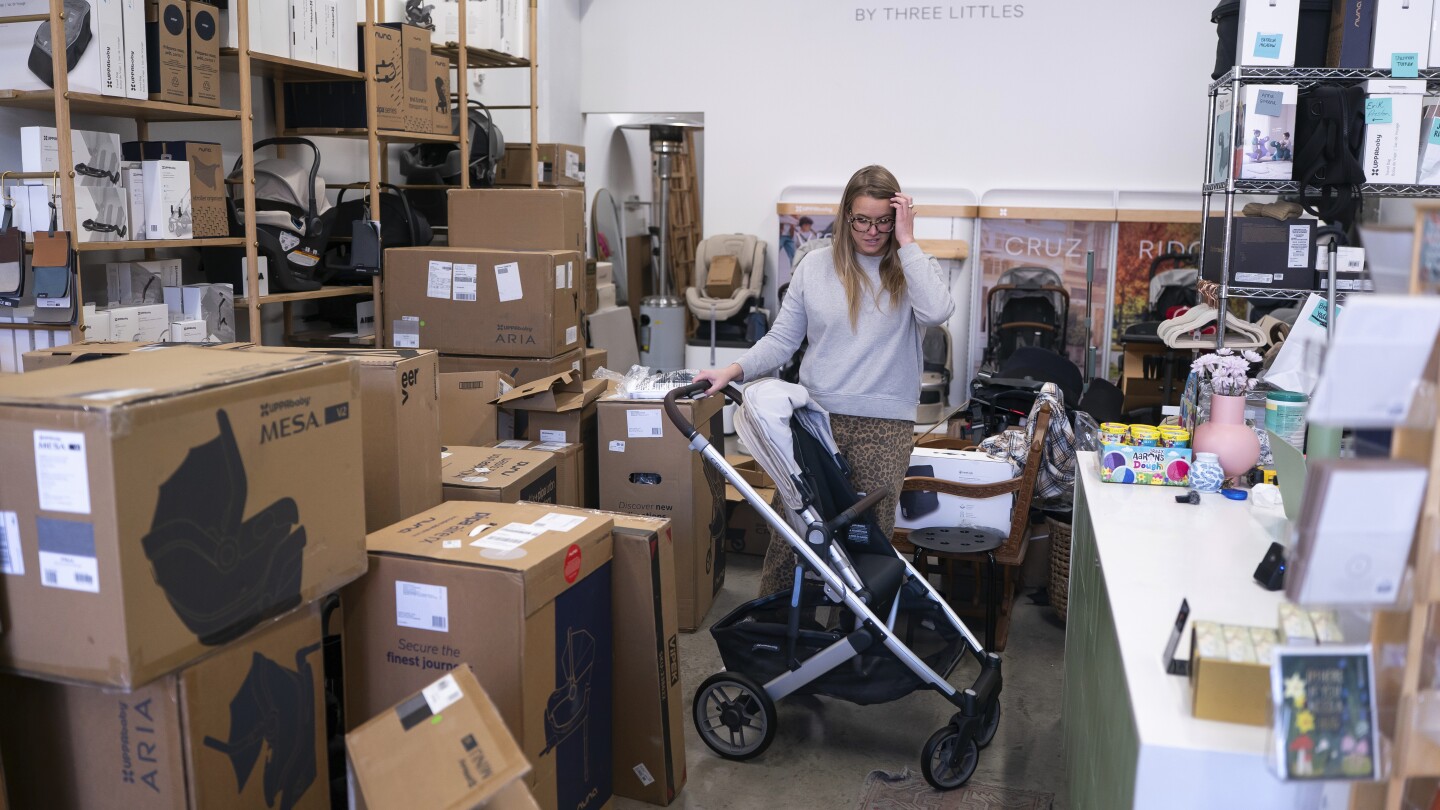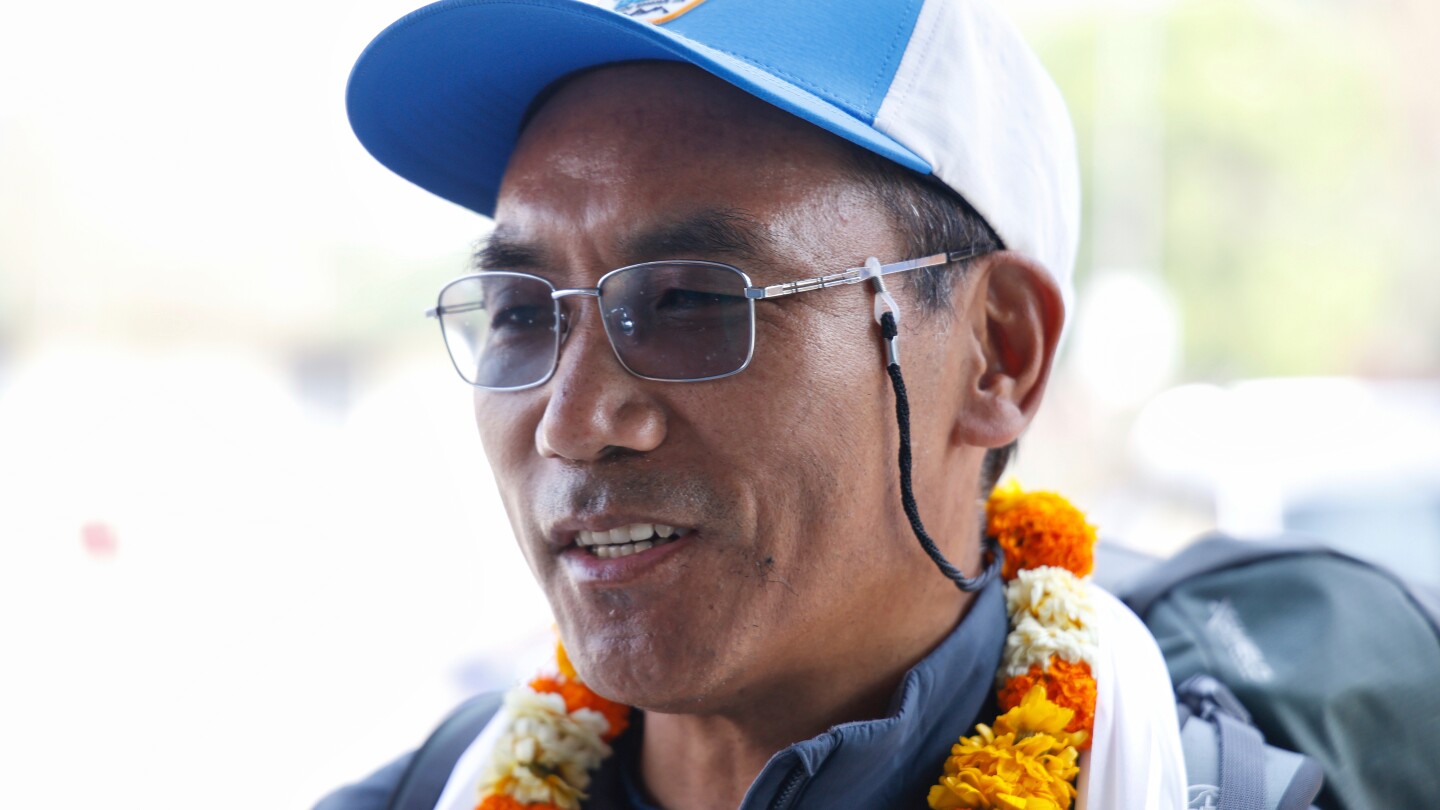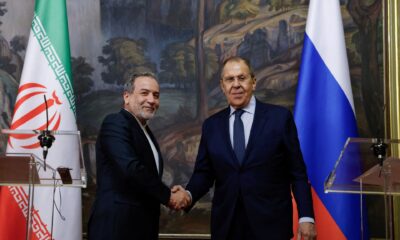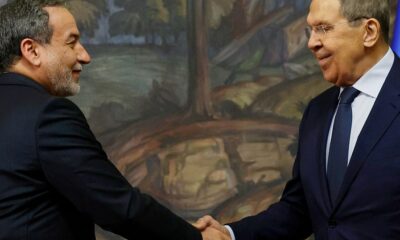Lifestyle
Patrick Henry’s ‘liberty or death’ speech turns 250

The phrase “Give me liberty or give me death!” has been expressed by protesters from the 1989 Tiananmen Square uprising in China to those who opposed COVID-19 restrictions in the U.S. in 2020.
Malcolm X referenced it in his 1964 “Ballot or the Bullet” speech, demanding equal rights for Black Americans. President Donald Trump quoted it on his Truth Social platform last year, lambasting a judge during his criminal hush money trial.
The phrase was reportedly first used 250 years ago Sunday by lawyer and legislator Patrick Henry to persuade Virginia colonists to prepare for war against an increasingly punitive Great Britain, just weeks before the American Revolution.
Tensions were coming to a boil, particularly in Massachusetts, where the British replaced elected officials, occupied Boston and shuttered the harbor.
“The entire episode was about helping our brethren in Massachusetts,” said historian John Ragosta, who wrote a book on Henry. “It’s about the community. It’s about the nation. It’s not about, ‘What do I get out of this personally?’”
The printed version of Henry’s galvanizing speech in a crowded church was about 1,200 words. And yet those seven words have survived the centuries like a line from a Shakespeare play.
“It’s a very malleable phrase,” said Patrick Henry Jolly, a fifth great grandson of Henry. “It’s something that can be applied to many different circumstances. But I think it’s important that people understand the original context.”
Jolly is set to reenact Henry’s speech Sunday in the same church where his ancestor delivered it. The presentation, which will be streamed online, is part of Virginia’s commemoration of the 250th anniversary of the nation’s birth.
Here’s more information on Henry and his speech:
Who was Patrick Henry?
Born to an influential Virginia family in 1736, Henry became a successful trial lawyer in his 20s.
According to the Library of Congress, he once astonished a courtroom with an argument that “man is born with certain inalienable rights,” an idea echoed in the Declaration of Independence.
In 1765, Henry won a seat in Virginia’s colonial legislature. He was instrumental in opposing Great Britain’s Stamp Act, which levied a direct tax on the American colonies to raise money for Britain.
As tensions increased, many Americans felt like second-class citizens with no representation in parliament, Ragosta said. By the time of Henry’s speech, many were thinking: “The king won’t listen to us. They’ve invaded Boston. What should we in Virginia do about that?”
Did he really say it?
In his 2004 book, “Founding Myths,” historian Ray Raphael wrote “it is highly unlikely” Henry said, “Give me liberty or give me death!”
Henry did not write down the speech and the version we know today was published 42 years later in an 1817 biography of him. The biographer, attorney William Wirt, pieced together Henry’s words from the decades-old recollections of people who were there.
The printed version, Raphael wrote, “reflects the agendas of 19th century nationalists who were fond of romanticizing war.”
But other historians said there is ample evidence Henry uttered those words.
“We have multiple people, years later, saying, ‘I remember like it was yesterday,’” Ragosta said, adding that Thomas Jefferson was one of them.
They recalled Henry lifting a letter opener that looked like a dagger and plunging it under his arm as if into his chest before saying the famous phrase.
“That’s 18th century oratory,” Ragosta said. ”It’s very impassioned.”
Jon Kukla, another historian who wrote a book on Henry, cited other evidence. Men in Virginia’s militias soon embroidered their heavy canvas shirts with “liberty or death.”
The popular 1712 play “Cato” about a Roman senator also contains the line, “It is not now a time to talk of aught, but chains or conquest, liberty or death.”
“It would have been part of the literate culture of the age,” Kukla said.
What happened next?
The most immediate impact of Henry’s speech was more support for independence and the expansion of Virginia’s militias.
In the months afterward, Henry and others also were driven by fears that the British would free enslaved people, Raphael suggests in “Founding Myths.”
Virginia’s royal governor, Lord Dunmore, offered freedom to enslaved people who fought for the British.
But Ragosta said that was not a primary motivation for Henry, who enslaved dozens of people.
“That does move a lot of people off the fence into the patriot column, undoubtedly,” Ragosta said. “But that’s not really what’s going on with the Jeffersons, the Washingtons, the Henrys. They had already been very committed to the patriot movement.”
Following independence, Henry served as Virginia’s governor five times. He also became known as an anti-federalist, opposing ratification of the U.S. Constitution and a strong central government.
But Henry later spoke in support of the founding document at George Washington’s urging in 1799, the year Henry died.
“He says, ‘Look, I voted against the Constitution, but we the people voted for it. And so we have to abide by it,’” Ragosta said.
Liberty versus license
Jolly, Henry’s descendant, said most people react positively to his ancestor’s famous words and acknowledge their historical significance.
“And there are some people that react thinking that it’s a rallying cry for them today to defend their rights — on both sides of the aisle,” Jolly said.
Yet Henry and his contemporaries were careful to distinguish liberty from license, said Kukla, the historian.
“Liberty, as they understood it, was not the freedom to do anything you damn well pleased,” Kukla said.
Lifestyle
Queen Elizabeth II’s favorite dog breed race for glory in the UK’s Corgi Derby

LONDON (AP) — Some of the fastest canines on four very short legs have raced for glory in Scotland’s annual Corgi Derby.
The Musselburgh Racecourse Corgi Derby was first held in 2022 to mark Queen Elizabeth II’s 70 years on the throne. The late monarch was a devoted corgi fan who owned almost 30 of the breed over the decades, along with a few dorgis – a corgi-dachshund cross.
Four-year-old Juno beat a 16-strong field of dashing dogs dressed in bright sweaters over the 230-foot (70-meter) race on Saturday at the racecourse outside Edinburgh. She came from behind in the final stretch to beat last year’s winner, Rodney.
The winner and her owners, Alisdair Tew and Fran Brandon, were presented with a trophy and dog treats by tennis coach Judy Murray, mother of Scottish star Andy Murray.
Tew told the BBC that “we trained her for this last year but this year we just resorted to just letting her chasing things, particularly seagulls” on Edinburgh’s Portobello Beach.
“Juno is always ready for treats -– that is probably why she won,” he said.
Elizabeth’s love of corgis began in 1933 when her father, King George VI, brought home a Pembroke Welsh corgi they named Dookie
Corgis were often by Elizabeth’s side in the decades before her death in September 2022 — accompanying her on official tours, reportedly sleeping in their own room at Buckingham Palace and occasionally nipping the ankles of visitors or royal family members.
Three corgis even appeared alongside the queen as she climbed into James Bond’s waiting helicopter in the spoof video that opened the 2012 London Olympics.
Lifestyle
Tariffs are likely to make having a baby cost more

Sam Rutledge and his wife have a baby due in mid-July, so they thought they had a few more months to research and buy the gear they’ll need.
But President Donald Trump’s tariff announcement in early April turned the couple’s slow walk into a sprint. In the past few weeks, they’ve bought two strollers, a car seat, a nursery glider, a crib and a high chair. All of them are made overseas.
“These are all pretty expensive under normal conditions, but when it became clear tariffs were coming we decided to buy them in case they became prohibitively expensive,” said Rutledge, who is a high school physics teacher.
Raising a child in America has never been cheap. In the first year alone, it costs an average of $20,384, according to Baby Center, a parenting website. But tariffs – ranging from 10% for imports from most countries to 145% for imports from China — will make it many times more expensive for new parents.
An estimated 90% of the core baby care products and the parts that go into making baby paraphernalia – from bottles and diaper pails to strollers and car seats – are made in Asia, according to the Juvenile Products Manufacturers Association, a U.S. trade group. The vast majority come from China.
“Overseas manufacturing has been the norm in our industry for decades,” said Lisa Trofe, the association’s executive director.
It wasn’t always this way. When Munchkin Inc. CEO Steven Dunn founded his company in 1991, it made baby bottles in California with tooling from New Jersey. But over the years, the manufacturers he used shut down and the cost of doing business in the U.S. skyrocketed. Now, about 60% of Munchkin’s 500 products, from a $5 sippy cup to a $254 Night Owl Stroller with headlights, are made in China.
In response to the tariffs, Dunn halted orders from China and instituted a hiring freeze at Munchkin’s California headquarters, where 320 people are employed. Dunn expects Munchkin will run out of some products within three months.
“There is no possibility of being able to pass on those tariffs” to customers in the form of price increases, he said.
Dunn said he tried to reduce his dependence on China in recent years, shifting some manufacturing to Vietnam and Mexico. He also spent a year communicating with American manufacturers to see if one could make Munchkin’s new Flow Nipple Shield, which allows a breastfeeding mother to see if her milk is flowing. But most said they couldn’t make the complex silicone product, Dunn said. It’s now made in Vietnam.
“There’s not enough tool makers and manufacturing expertise and automation and skilled labor in the U.S. to make the thousands of products the juvenile industry needs,” Dunn said.
Multiple baby brands and companies contacted by The Associated Press didn’t respond or said they weren’t commenting on the tariffs, including Graco, Chicco, Britax, Nuna, Dorel Juvenile, UppaBaby, Evenflo and Bugaboo.
The Juvenile Products Manufacturers Association said it asked the Trump administration for a tariff exemption, arguing that baby products are essential for children’s well-being. Trump exempted some baby products, including car seats and high chairs, from import taxes during his first administration. But he hasn’t said whether he would consider doing so again.
The Associated Press left a message seeking comment with the White House.
Nurture&, a company that makes a popular nursery glider and other baby furniture, said it’s trying to be transparent about the impact of tariffs.
In a recent email, the company told customers it started lowering prices on some items when the tariffs hit. The company, which was founded in 2020, said it would keep those lower prices in place until April 30, but after that it may not be able to absorb the full cost of the import duties.
“These are large purchases, these are investments, and this is a very sensitive life stage,” Nurture& Chief Merchant Jill Gruys said. “We want people to make the best decision for their budget and their family.”
Elizabeth Mahon, the owner of Three Littles, a baby store in Washington, said she’s worried the tariffs will make essential products too expensive for some families.
Mahon volunteers twice per month at the Department of Motor Vehicles, where she teaches people how to buckle their kids safely into car seats. Some families still must be persuaded to use car seats, she said. Mahon fears higher prices would be another deterrent.
“No one is dying if they can’t buy a toy, but if they don’t have access to car seats, kids will get seriously injured,” she said.
At her own store, Mahon is getting notices that some manufacturers plan to introduce steep price increases in May. She feels lucky she could rent a storage facility and build up inventory ahead of the tariffs. For many small businesses, she said, the extra costs are “a death sentence.”
At The Little Seedling baby shop in Ann Arbor, Michigan, owner Molly Ging said she would normally be putting in Christmas orders at this time of year. Instead, she’s sorting through price increase notices from many of the vendors she works with.
“It’s a lot to manage, and I just have no idea how it’s going to play out,” she said.
Business is brisk right now, with customers hoping to beat tariff-related price increases. But Ging worries about her 13 employees – all moms who bring their kids to work – and about whether she can maintain enough inventory to meet future demand.
“Babies don’t stop being born because there’s tariffs,” she said.
Lifestyle
Famed Sherpa guide will attempt to climb Mount Everest for a 31st time and break his own record

KATHMANDU, Nepal (AP) — One of the greatest mountain guides will attempt to scale the world’s highest peak for the 31st time — and possibly the 32nd time as well — and break his own record.
Kami Rita, 55, flew to Mount Everest on Sunday from Kathmandu to lead a group of climbers who will try to reach the 8,849-meter (29,032-foot) summit during the spring climbing season.
“I am mentally, emotionally and physically prepared to climb the mountain,” Kami Rita told The Associated Press at Kathmandu’s airport. “I am in my top physical condition right now.”
He holds the record for the most successful ascents of Mount Everest at 30 times. In May last year he climbed the peak twice.
“My first priority is to get my client to the summit of the peak. Then I will decide on whether I will climb the peak more than one time during the season. It depends on the weather and conditions on the mountain,” he said.
His closest competitor for the most climbs of Mount Everest is fellow Sherpa guide Pasang Dawa, who has made 27 successful ascents of the mountain.
Kami Rita first climbed Everest in 1994 and has been making the trip nearly every year since. He is one of many Sherpa guides whose expertise and skills are vital to the safety and success each year of foreign climbers aspiring to stand on top of the mountain.
His father was among the first Sherpa mountain guides. In addition to his Everest climbs, Kami Rita has scaled several other peaks that are among the world’s highest, including K2, Cho Oyu, Manaslu and Lhotse.
According to Nepal’s Department of Tourism, 214 climbers have been issued permits to attempt Mount Everest from the Nepali side of the peak in the south this climbing season, which ends in May. Most climbing of Everest and nearby Himalayan peaks is done in April and May, when weather conditions are most favorable.
Everest was first climbed in 1953 by New Zealander Edmund Hillary and Nepali Sherpa Tenzing Norgay.
-

 Education2 days ago
Education2 days agoHarvard’s battle with the Trump administration is creating a thorny financial situation
-

 Sports2 days ago
Sports2 days agoClint Dempsey speaks to CNN over his concerns over the USMNT heading into its home World Cup
-

 Middle East1 day ago
Middle East1 day agoTunisian court hands opposition figures lengthy jail terms | Human Rights News
-

 Europe2 days ago
Europe2 days agoTrump’s ‘lone ranger’: How Steve Witkoff became the defacto point man on America’s foreign policy challenges
-

 Conflict Zones2 days ago
Conflict Zones2 days agoIran has ‘doubts’ about US intentions ahead of nuclear talks | Politics News
-

 Conflict Zones2 days ago
Conflict Zones2 days ago‘How do I live like this?’ asks Gaza boy who lost arms in Israeli attack | Gaza News
-

 Conflict Zones2 days ago
Conflict Zones2 days agoTrump says US may ‘pass’ on helping end war if Russia, Ukraine resist deal | Russia-Ukraine war News
-

 Africa2 days ago
Africa2 days agoIran seeks Russia’s support for its nuclear talks with US




